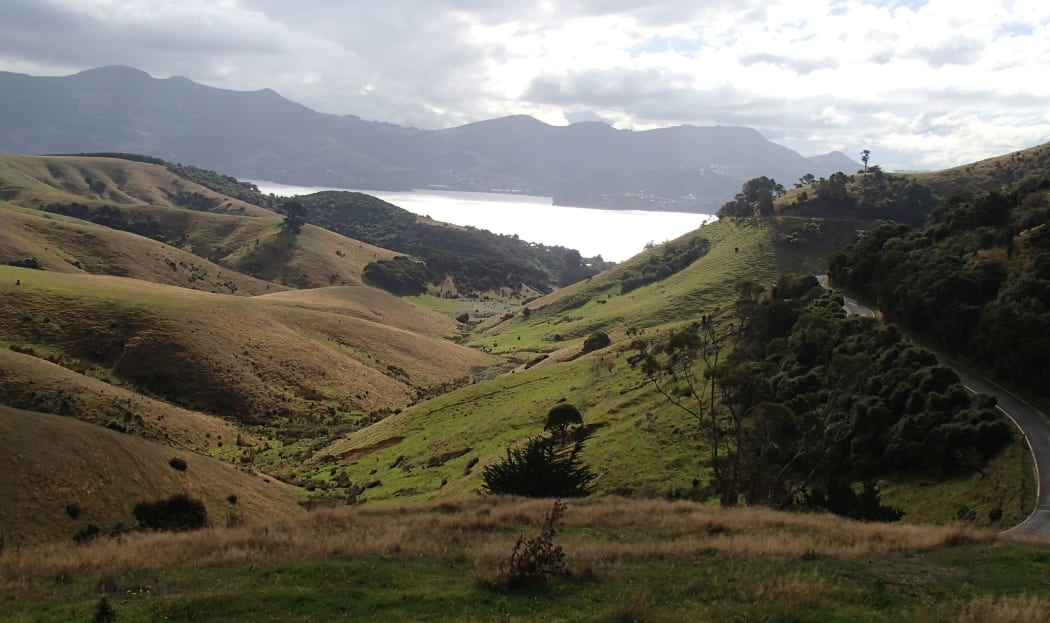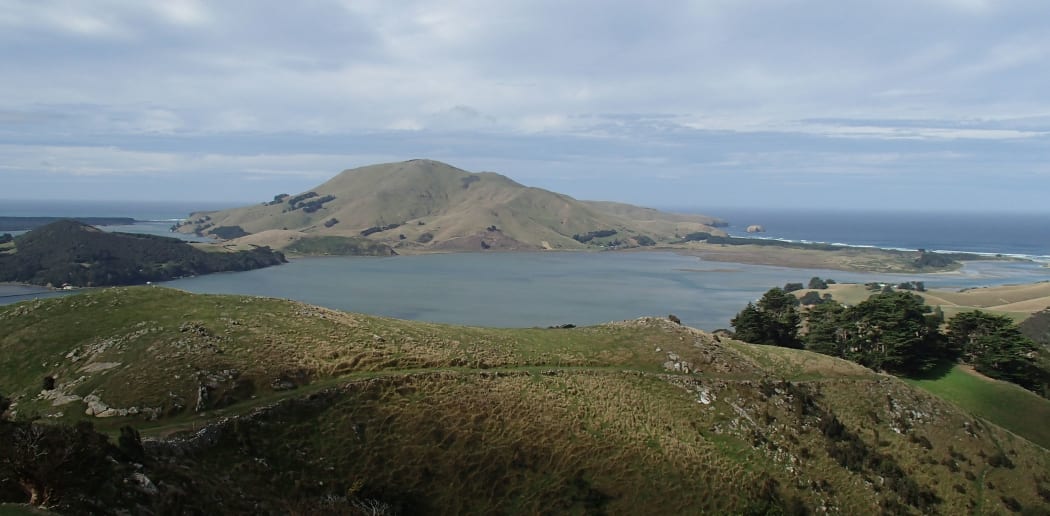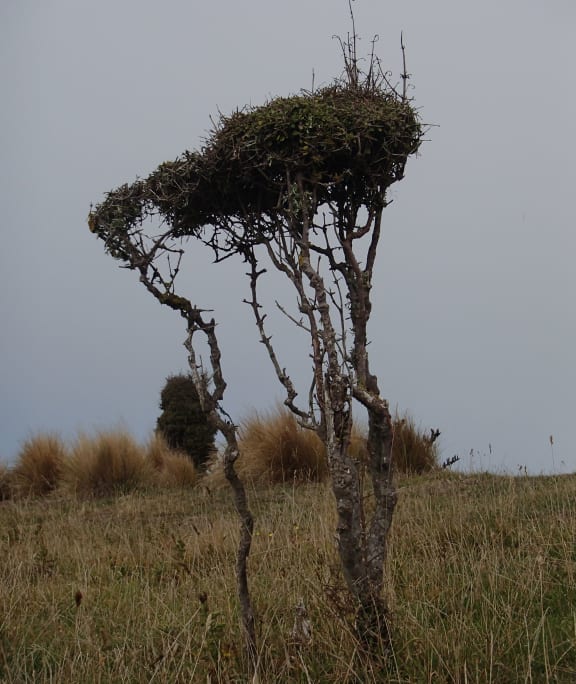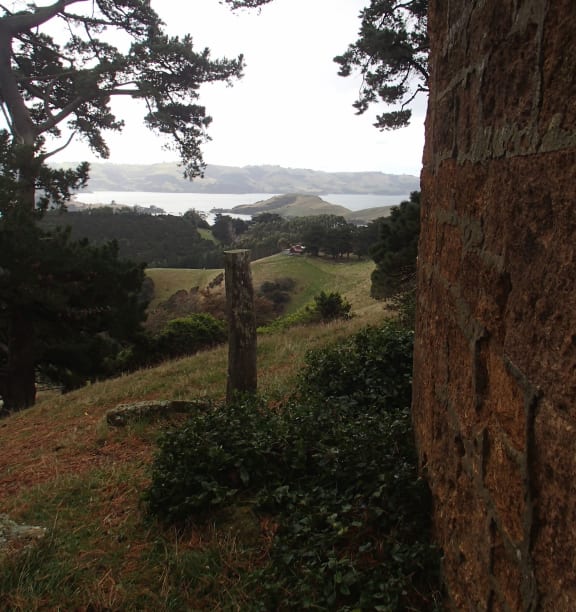By the turn of the twentieth century, 700 years of hunting, fishing, tree felling and ploughing had transformed Otago Peninsula from a rich diverse forest with large colonies of seabirds, marine mammals and large land birds, to a grassy mosaic of pasture, small settlements and cows.
In his book “The Face of Nature”, environmental historian Jonathan West charts the transformation, and reflects on how the land changed people as much as they changed the land.

View across Hereweka Farm towards Otago Harbour. Once covered in forest, Otago Peninsula is now mostly farmland. Photo: Alison Ballance
Subscribe to Our Changing World for free on Apple Podcasts, Spotify, Stitcher, RadioPublic or wherever you listen to your podcasts

Photo: Otago University Press
Otago Peninsula is a long tongue of land jutting out from Dunedin city, with the wild Pacific Ocean on one side and the gentle waters of Otago Harbour on the other. It was first settled around the turn of the 14th century, and by 1900 it had undergone a radical transformation.
“I wanted to look at Otago Peninsula before people arrived, then to look at how people had approached their new environment – first, Polynesian Maori arrivals and then Europeans and the rest of the world,” says environmental historian and author Jonathan West.
In the book The Face of Nature – an environmental history of the Otago Peninsula (Otago University Press 2017) Jonathan explores “how that experience had changed people, and how that change had occurred both through the evolution of attitudes and the need to shape a new economy as the world around them changed.”
Early Polynesian settlement
Jonathan says that archaeological evidence shows that Polynesians settled New Zealand around 1280, and they very quickly dispersed around the coast and outlying islands. He says Otago Peninsula was almost certainly part of this early “star-burst” of expansion, which Jonathan suggests was motivated by wanting to “claim and gain territory really fast.”

View across Hooper's Inlet towards Mount Charles, Otago Peninsula. Photo: Alison Ballance

Author and historian Jonathan West. Photo: Otago University Press
What those first Polynesians discovered on Otago Peninsula was a diverse landscape with rich forest as well as wetlands. There were plentiful land birds including kakapo and moa, as well as a multitude of seabirds.
“New Zealand, when first discovered, had an extraordinary range and abundance of seabirds… [at times] you could see several square kilometres of sea covered in thick crowding flocks of birds.”
The peninsula and its surrounding waters were also rich in marine life, from seals and whales to fish and shellfish.
Early Maori were very mobile, and travelled to and from base camps in search of good food sources. There were up to three such base camps on the peninsula, at Otakou near the harbour entrance as well as at Papanui Inlet and Little Papanui Beach.
Jonathan says it only took a few generations for the small founding human population to hunt most species to extinction, or close to it. He points out that this was not unique to the peninsula, but has happened many times, around the world.
“The extermination of those large animals happened extremely quickly.”

Small divaricating shrubs are shaped by strong salty winds on the ocean side of Otago Peninsula. Photo: Alison Ballance
Harvest from the sea
By the time European and American sealers arrived in the early 1800s there were only small breeding populations of seals around the peninsula, but these were quickly harvested.
The sealers were followed by the Weller brothers who established a shore-based whaling station in the harbour at Otakou, in the early 1830s.
Local Maori quickly became a significant part of the whaling labour force, and Maori women grew food, especially potatoes, to supply the whaling station as well as for trade further afield.
“This symbiosis between Maori and Sydney capital was very successful for a short while in generating a great deal of life, and a bustling town sprang up.”
But within a few years, the whalers had hunted the whales to such low numbers that they were no longer economic to harvest.
Owning the land
The next phase of settlement on the Otago Peninsula was, says Jonathan “predicated on owning … and transforming the land.”

In the late 1800s Otago Peninsula was home to more than 200 small dairy farms. Old stone walls and overgrown macrocarpa shelter belts mark old house sites. Photo: Alison Ballance
Most of the peninsula was bought from local Maori and sold to European settlers. The forest was quickly cleared, and over two hundred small dairy farms were created.
“All the significant change had taken place by 1900, when I finished my research,” says Jonathan.
It was the speed and enormity of change that prompted the book’s title.
“I drew the title ‘The Face of Nature’ from a remark made by George Malcolm Thompson, a leading natural scientist of the day, who had observed this sort of change over the decades since he arrived in the 1870s,” says Jonathan. “And he came to the conclusion that the whole face of nature had been changed.”
2018 Ockham New Zealand Book Awards
The Face of Nature – an environmental history of the Otago Peninsula (Otago University Press 2017) is a non-fiction finalist in the 2018 Ockham New Zealand Book Awards.


